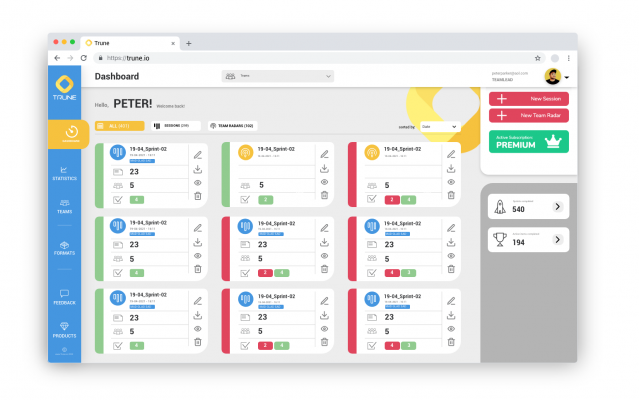The core scrum checklist is an easy way to find out, whether you are really doing scrum.
When I started in my new team we had all the scrum events in place – sprint planning, daily standup, demo session, retrospective meeting.
But it turned out we were still missing some important elements for really doing scrum.
How about your team? Is your scrum process really ok?
Verify with the following simple checklist!
The Core scrum checklist
The elements in the core scrum checklist are the essential parts of scrum.
Without these you probably shouldn’t call it scrum!
The list is not so short, but it is really simple.
Go through the list and verify in your head for each item, whether you can check it off.
Here we go, the CORE SCRUM CHECKLIST:
- Clearly defined product owner (PO)
- PO is empowered to prioritize
- PO has knowledge to prioritize
- PO has direct contact with team
- PO has direct contact with stakeholders
- PO speaks with one voice (in case PO is a team)
- Team has sprint backlog
- Highly visible
- Updated daily
- Owned exclusively by the team
- Daily scrum happens
- Whole team participates
- Problems & impediments are surfaced
- Demo happens after every sprint
- Shows working, tested software
- Feedback received by stakeholders & PO
- Have Definition of Done (DoD)
- DoD achievable within each iteration
- Team respects DoD
- Retrospective happens after every sprint
- Results in concrete improvement proposals
- Some proposals actually get implemented
- Whole team + PO participates
- PO has a product backlog (PBL)
- Top items are prioritized by business value
- Top items are estimated
- Estimates written by the team
- Top items in PBL small enough to fit in the sprint
- PO understands purpose of all backlog items
- Have sprint planning meeting
- PO participates
- PO brings up-to-date PBL
- Whole team participates
- Results in sprint plan
- Whole team believes plan is achievable
- PO satisfied with priorities
- Timeboxed iterations
- Iteration length 4 weeks or less
- Always end on time
- Team not disrupted or controlled by outsiders
- Team usually delivers what they committed to
- Team members sit together
- Max 9 people per team
Pretty long list, he?
But still, it’s quite simple to understand.
How many of the items in the list were you not able to mentally check off?
Well, don’t worry.
Guidelines, not rules
Those items are not rules, but guidelines.
So if you did not check off an item, but you have a very good reason for that, it is still ok.
For instance, a team of two, might decide to skip the daily scrum, since they are pair programming all day anyway and might not need a separate meeting anyway.
If for some items in the list you weren’t sure whether to check them off or not, you can bring this list into your next retrospective.
It might be interesting for the team to go through the list together. But be aware, use this list as a discussion tool, not as an evaluation.
As I said, it is still fine, if the team does not check off all items int the checklist, as long as the have a good reason and still follow the underlying scrum principles.
The bottom line
There is another shorter and easier checklist, which looks like this:
- Delivering working, tested software every 4 weeks or less
- Delivering what the business needs most
- Process is continuously improving
If you achieve these three items in the checklist, then you can ignore all other checklists. Your process is fine.
Oh, if you are wondering, whether these checklists have been invented by me, then I have to say: No, of course not!
There is a smart guy with the name Henrik Kniberg, who is the inventor of those lists.
He is quite a famous Swedish scrum trainer, you can find quite some content from him on youtube or on the website of his company. He even wrote a couple of books.
From the website I actually copied the core scrum checklist, which you can find here: https://www.crisp.se/gratis-material-och-guider/scrum-checklist
There are actually a couple of other checklists on his website: one, which is named “Recommended but not always necessary” or another with the name “Scaling“.
Check it out! It gives you some nice input.
Ok, that’s it for today.
Give me some feedback in the comments. Do you think there is a missing item on the core scrum checklist? Or is there something on the list, which actually doesn’t belong there?
Write a comment and let me know.
Stay tuned and HabbeDiEhre!

